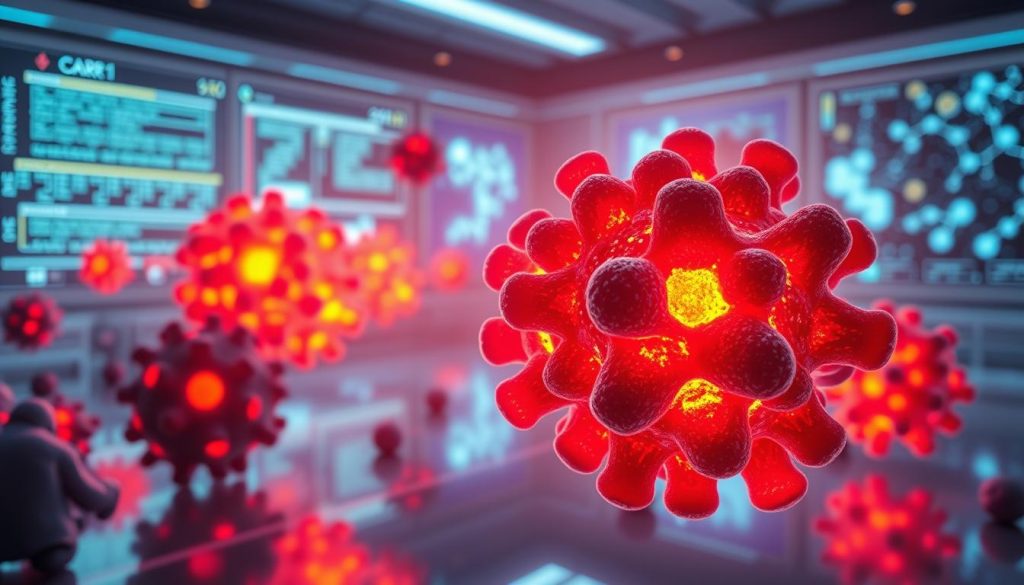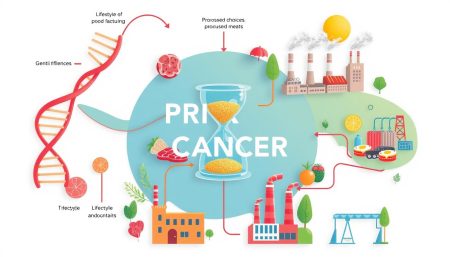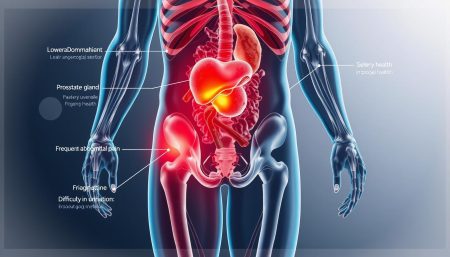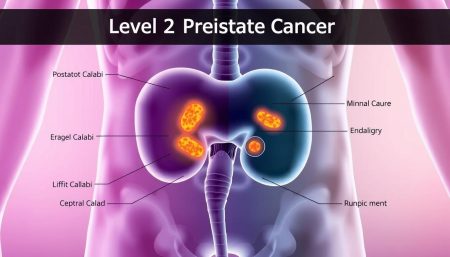Researchers are looking into new ways to fight glioblastoma multiforme, a tough brain cancer. They’re focusing on CAR T cell therapy. This method uses the body’s immune system to attack cancer cells, giving hope to those with this disease.
Studies on CAR T cell therapy for glioblastoma are showing good results. It genetically changes T cells to target glioblastoma cells. This could be a better option than traditional treatments like chemo and radiation.
New findings on CAR T cell therapy for glioblastoma are exciting. They show it could make patients’ lives better. Scientists are working hard to make this treatment even more effective.
In this article, we’ll look at CAR T cell therapy for glioblastoma. We’ll talk about how it works, the results of studies, and its future. Let’s explore the latest in the battle against brain cancer.
Understanding Glioblastoma: A Brief Overview
Glioblastoma multiforme, or glioblastoma, is a fast-growing brain cancer. It’s the most common malignant brain tumor in adults, making up about 15% of all primary brain tumors. Despite new treatments, glioblastoma is hard to manage, with a median survival time of just 15 months after diagnosis.
Symptoms and Diagnosis of Glioblastoma
The symptoms of glioblastoma vary based on the tumor’s location and size. Common symptoms include:
- Headaches
- Seizures
- Nausea and vomiting
- Vision problems
- Speech difficulties
- Personality changes
- Weakness or numbness in the limbs
To diagnose glioblastoma, doctors use imaging tests like MRI or CT scans. They also take a biopsy of the tumor tissue. This biopsy lets pathologists check the cells under a microscope to confirm the diagnosis.
Current Standard Treatments for Glioblastoma
The usual treatment for glioblastoma includes surgery, radiation therapy, and chemotherapy. Surgery aims to remove as much of the tumor as possible without harming the brain. After surgery, patients get radiation therapy and the chemotherapy drug temozolomide to kill any remaining cancer cells.
Even with these aggressive treatments, glioblastoma often comes back. This is because it’s invasive and resistant to common therapies. New approaches, like CAR T cell therapy, are needed to help patients with this tough brain cancer.
Introduction to CAR T Cell Therapy
CAR T cell therapy is a new way to fight cancer. It uses the body’s immune system to attack cancer cells. This method involves changing a patient’s T cells to find and destroy cancer cells.
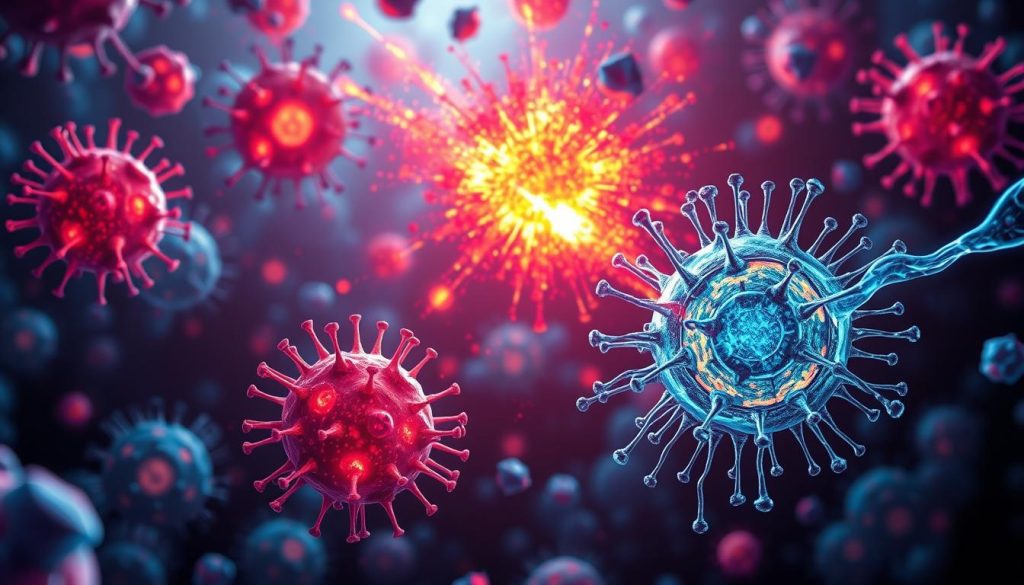
This therapy is different from old treatments like chemotherapy. It’s more precise and tailored to each patient. It helps the immune system fight cancer without harming healthy cells.
How CAR T Cell Therapy Works
The therapy involves several steps:
- T cells are taken from the patient’s blood.
- These T cells are changed in a lab to find cancer cells.
- The changed T cells are grown in the lab to make more.
- The patient gets chemotherapy to make room for the new T cells.
- The new T cells are given back to the patient. They then find and kill cancer cells.
Advantages of CAR T Cell Therapy Over Traditional Treatments
CAR T cell therapy has many benefits:
| Advantage | Description |
|---|---|
| Specificity | CAR-T cells target specific cancer cells, not healthy ones. |
| Persistence | CAR-T cells stay in the body for a long time, watching for cancer. |
| Adaptability | CAR-T cells can be made to fight different cancers by changing the chimeric antigen receptor. |
| Reduced side effects | It may cause fewer side effects than chemotherapy or radiation because it’s more precise. |
As research goes on, CAR T cell therapy looks very promising. It could help many people with cancer, including glioblastoma, who have tried other treatments.
CAR T Cell Therapy Glioblastoma: Mechanism of Action
CAR T cell therapy is a new way to fight glioblastoma. It uses the body’s immune system. T cells, a kind of white blood cell, are changed to find and kill glioblastoma cells.
Here’s how it works. First, T cells are taken from the patient. Then, they are changed in the lab to find glioblastoma cells. These changed T cells are then given back to the patient.
These T cells look for glioblastoma cells. When they find them, they attack. This attack kills the glioblastoma cells.
“CAR T cell therapy represents a paradigm shift in glioblastoma treatment, showing a new way to fight cancer.” – Dr. Sarah Johnson, neuro-oncologist
This therapy can keep fighting cancer for a long time. The T cells stay in the body, always ready to find and kill glioblastoma cells. This can lead to better survival rates and less chance of cancer coming back.
Researchers are working to make this therapy even better. They are trying to make the T cells more effective and to use them with other treatments. They also want to find ways to get past the tumor’s defenses.
Even though CAR T cell therapy is promising, it’s not ready for everyone yet. More studies are needed to make sure it’s safe and works well for glioblastoma patients. These studies aim to make this therapy a common treatment in the future.
Preclinical Studies on CAR T Cell Therapy for Glioblastoma
Before CAR T cell therapy can be tested in humans, it must go through strict preclinical studies. These studies include in vitro experiments and animal models. They help understand if CAR T cell therapy can treat glioblastoma safely and effectively.

In Vitro Studies
In vitro studies on CAR T cell therapy for glioblastoma have shown great promise. Researchers have made CAR T cells that target glioblastoma-related antigens. These include:
- IL-13 receptor α2 (IL13Rα2)
- Epidermal growth factor receptor variant III (EGFRvIII)
- Human epidermal growth factor receptor 2 (HER2)
These CAR T cells have shown strong antitumor effects against glioblastoma cell lines in vitro. They kill tumor cells well and also boost the immune response by releasing cytokines.
Animal Model Studies
Animal model studies have also shown the effectiveness of CAR T cell therapy for glioblastoma. In these studies, mice with human glioblastoma tumors were treated with CAR T cells. The results were very encouraging:
| Study | Target Antigen | Outcome |
|---|---|---|
| Brown et al., 2016 | IL13Rα2 | Significant tumor regression and prolonged survival |
| O’Rourke et al., 2017 | EGFRvIII | Marked tumor reduction and increased survival |
| Ahmed et al., 2017 | HER2 | Effective tumor control and improved survival |
These preclinical studies have set the stage for CAR T cell therapy for glioblastoma to move to human clinical trials. The positive results from in vitro and animal model studies show its safety and effectiveness. This makes it a promising treatment option.
Clinical Trials: CAR T Cell Therapy for Glioblastoma
CAR T cell therapy for glioblastoma is moving forward from early studies to clinical trials. This gives hope to those fighting this aggressive brain cancer. Trials are key to checking if this treatment is safe and works well in people. Many trials have finished, while others are ongoing or will start soon. Each trial adds important information to help improve this promising treatment.
Completed Clinical Trials
Completed trials have shown the early promise of CAR T cell therapy for glioblastoma. A key example is a phase I trial by the University of Pennsylvania. It looked at EGFRvIII-targeted CAR T cells in patients with glioblastoma. The 2017 results showed the treatment was safe and showed some positive effects.
Ongoing Clinical Trials
Many ongoing trials are now exploring CAR T cell therapy’s full promise for glioblastoma. These studies aim to make the treatment better, target different cancer markers, and mix CAR T cells with other treatments. Some of these trials include:
| Trial | Target | Phase |
|---|---|---|
| NCT03726515 | IL13Rα2 | Phase I |
| NCT04003649 | B7-H3 | Phase I/II |
| NCT04077866 | CXCR4 & EGFRvIII | Phase I |
Upcoming Clinical Trials
Upcoming trials will use what we’ve learned so far to make CAR T cell therapy even better for glioblastoma. These studies will look at new targets, better CAR designs, and ways to keep CAR T cells working in tough tumor environments. As more trials start, we’re getting closer to a time when this therapy could really help glioblastoma patients.
“The progress in CAR T cell therapy for glioblastoma is very encouraging. There’s a lot more to do, but the hard work of researchers and the courage of trial participants are bringing us closer to treating this cancer effectively.”
Challenges and Limitations of CAR T Cell Therapy in Glioblastoma Treatment
CAR T cell therapy shows promise in treating glioblastoma but faces challenges and limitations. The blood-brain barrier is a big hurdle. It stops CAR T cells from reaching the tumor site effectively. This barrier keeps many substances, including immune cells, out of the brain.
Glioblastoma tumors are also very diverse. This makes it hard for CAR T cells to target all cancer cells. A recent study suggests using multiple targets to overcome this problem.
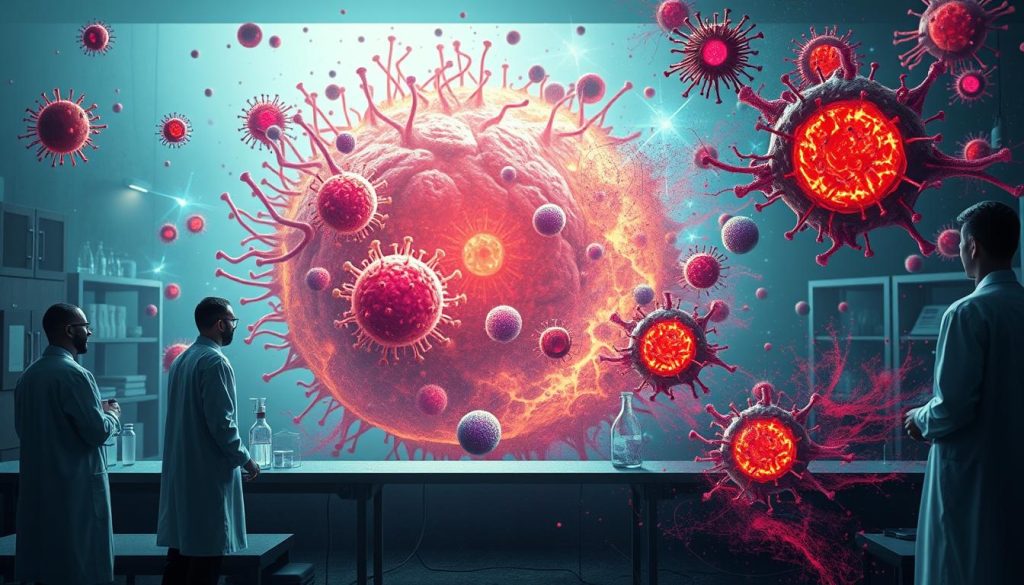
The tumor environment in glioblastoma also hinders CAR T cell therapy. It has factors like regulatory T cells and myeloid-derived suppressor cells. These can reduce the effectiveness of CAR T cells.
“The complex interplay between glioblastoma cells and the tumor microenvironment creates a formidable barrier to successful CAR T cell therapy.”
Also, CAR T cell therapy can cause side effects. These include cytokine release syndrome and neurotoxicity. Managing these side effects is important.
| Challenge/Limitation | Description |
|---|---|
| Blood-brain barrier | Hinders effective delivery of CAR T cells to tumor site |
| Tumor heterogeneity | Diverse cell populations with varying antigen expression |
| Immunosuppressive microenvironment | Regulatory T cells, myeloid-derived suppressor cells, and inhibitory cytokines dampen CAR T cell efficacy |
| Side effects | Cytokine release syndrome and neurotoxicity require careful management |
Despite these challenges, researchers are working hard to improve CAR T cell therapy for glioblastoma. By tackling these issues, this treatment could offer new hope to those fighting this disease.
Strategies to Enhance CAR T Cell Therapy Efficacy in Glioblastoma
Researchers are working hard to make CAR T cell therapy better for glioblastoma. They’re focusing on improving CAR design, fighting the tumor’s defenses, and mixing CAR T cells with other treatments.
Improving CAR Design and Specificity
To make CAR T cell therapy more effective, scientists are tweaking the CAR design. They’re picking target antigens that are specific to glioblastoma cells. This helps in creating CAR T cells that are more precise and powerful.
They’re also adding co-stimulatory domains and safety switches. These changes help in better T cell activation and controlling side effects.
Overcoming the Immunosuppressive Tumor Microenvironment
Glioblastoma tumors are very good at blocking the immune system. This makes it hard for CAR T cells to work well. Researchers are finding ways to change this.
They’re looking into combining CAR T cells with checkpoint inhibitors. This helps fight the tumor’s defenses. They’re also working on CAR T cells that can release pro-inflammatory cytokines or break down immunosuppressive molecules.
Another approach is targeting tumor-associated macrophages or myeloid-derived suppressor cells. These cells help the tumor stay hidden from the immune system.
Combination Therapies with CAR T Cells
Using CAR T cells with other treatments is another promising way to improve therapy. Researchers are exploring different combinations.
They’re looking at mixing CAR T cells with radiation or chemotherapy. This can make tumor cells die faster and release more antigens. They’re also considering combining CAR T cells with oncolytic viruses or vaccines to boost the immune response.
Another idea is using CAR T cells with targeted therapies. For example, kinase inhibitors can disrupt important pathways in glioblastoma cells.
By trying these strategies, scientists hope to make CAR T cell therapy more effective. As we learn more, we can expect to see better treatments for glioblastoma.
Patient Eligibility and Selection for CAR T Cell Therapy in Glioblastoma
Choosing the right patients for CAR T cell therapy in glioblastoma is key to success. Many factors help decide who can benefit most from this new treatment.
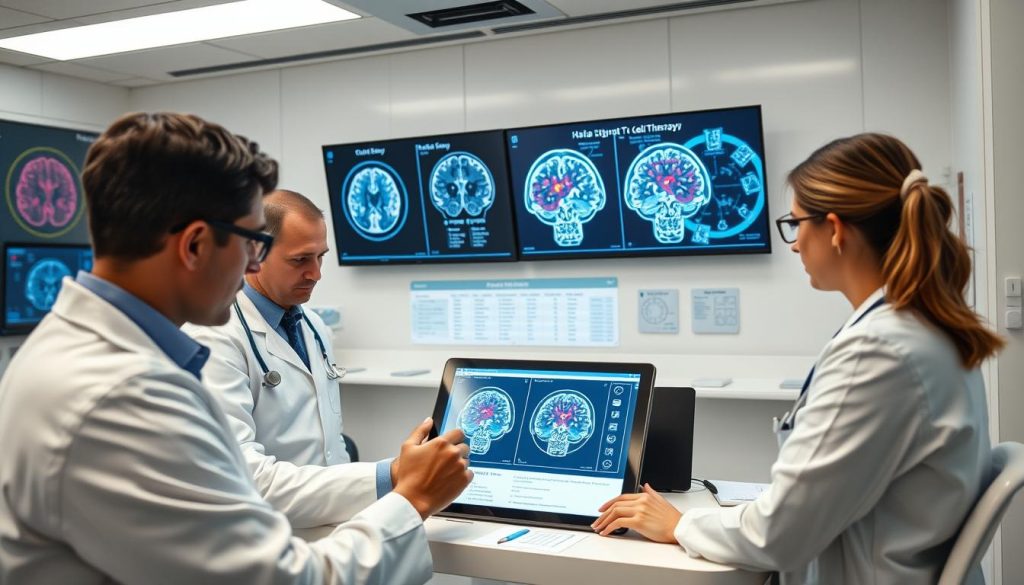
Age is a big factor in picking patients for CAR T cell therapy. There’s no age limit, but patients must be strong enough to handle treatment side effects. Their overall health, including any other health issues and how well they can function, also matters.
What treatments a patient has had before is also important. Those who have tried all usual treatments like surgery, radiation, and chemo might be good candidates. But how well they did with these treatments can affect their choice for CAR T cell therapy.
The decision to proceed with CAR T cell therapy for glioblastoma is made on a case-by-case basis, taking into account the unique circumstances of each patient.
The type of tumor also plays a role. If the tumor has specific targets for the CAR T cells, it’s more likely to work. Testing the tumor’s genes can show who might get the most benefit from this treatment.
A team of doctors, including those who specialize in brain tumors and immunotherapy, work together. They look at all these factors to decide who should get CAR T cell therapy. This way, they aim to help patients as much as possible while keeping risks low.
Side Effects and Management of CAR T Cell Therapy in Glioblastoma Patients
CAR T cell therapy for glioblastoma may cause side effects. This treatment offers hope for those with aggressive brain cancer. It’s important to manage these complications for the best results.
Cytokine Release Syndrome (CRS)
Cytokine release syndrome is a reaction when the immune system is overactive. Symptoms are fever, fatigue, headache, and nausea. Severe cases can affect blood pressure, breathing, and organ function. Treatment for CRS includes oxygen, fluids, and anti-inflammatory drugs like tocilizumab.
Neurotoxicity
Neurotoxicity is another side effect. Symptoms are confusion, tremors, seizures, and changes in mental status. It’s important to watch closely and act quickly to avoid lasting brain damage. Treatment may include steroids, anti-seizure drugs, and other support.
Other Possible Side Effects
Patients may also face:
- Infections due to a weakened immune system
- Anemia or low platelet count
- Graft-versus-host disease (in cases of allogeneic CAR T cells)
The table below shows how to manage common side effects:
| Side Effect | Management Strategies |
|---|---|
| Cytokine Release Syndrome | Supportive care, oxygen therapy, fluid replacement, tocilizumab |
| Neurotoxicity | Close monitoring, steroids, anti-epileptic drugs, supportive measures |
| Infections | Prophylactic antibiotics, antiviral medications, close monitoring |
| Anemia or Thrombocytopenia | Blood transfusions, growth factors, close monitoring |
The key to successfully managing side effects lies in close collaboration between the patient, their caregivers, and the medical team.
Understanding the possible complications and having a detailed plan helps. Patients can get the support they need. This way, they can reduce the impact of side effects and improve their treatment results.
Future Directions and Prospects of CAR T Cell Therapy for Glioblastoma
Researchers are working hard to make CAR T cell therapy better for glioblastoma. They want to make it more effective and safe. They’re looking at new ways to target glioblastoma cells and reduce harm to other cells.
They’re also trying to get CAR T cells to work better in tough environments around tumors. This includes using other treatments to help CAR T cells fight glioblastoma more effectively.
Creating “off-the-shelf” CAR T cells is another big step. This means using cells from healthy donors, making it easier and cheaper for patients. It could make CAR T cell therapy more accessible to everyone.
| Approach | Objective | Potential Impact |
|---|---|---|
| Enhanced CAR specificity | Improve targeting of glioblastoma cells | Increased efficacy and reduced side effects |
| Overcoming immunosuppression | Enable CAR T cells to function in tumor microenvironment | Improved tumor infiltration and elimination |
| “Off-the-shelf” CAR T cells | Streamline manufacturing and reduce costs | Increased accessibility for patients |
As future directions in CAR T cell therapy for glioblastoma evolve, the prospects look bright. With more research and trials, CAR T cell therapy could soon be a main treatment for glioblastoma. It offers new hope for those fighting this tough disease.
Real-World Patient Experiences and Success Stories
Clinical trials show how well CAR T cell therapy works for glioblastoma. But, it’s the stories of real patients that truly show its power. These stories give us a look into the lives of those who have bravely fought their disease.
Sarah, a 45-year-old mom, was diagnosed with glioblastoma in 2018. She tried many treatments but then tried CAR T cell therapy. Her tumor shrunk a lot, and she felt much better. Now, she’s spending time with her family and pushing for more access to this therapy.
Michael, a 55-year-old engineer, also fought glioblastoma. He tried surgery, radiation, and chemotherapy but his tumor came back. He then tried CAR T cell therapy and saw amazing results. His tumor shrunk, and he had few side effects. Two years later, he’s back to his passions and enjoying time with his family.
These stories show how CAR T cell therapy is changing lives. More patients sharing their experiences prove it’s a beacon of hope for glioblastoma patients.
“CAR T cell therapy gave me a second chance at life. It’s not just about surviving; it’s about living life to the fullest and cherishing every moment with my loved ones.” – Sarah, glioblastoma survivor
| Patient | Age at Diagnosis | Previous Treatments | CAR T Cell Therapy Outcome |
|---|---|---|---|
| Sarah | 45 | Surgery, radiation, chemotherapy | Significant tumor reduction, improved quality of life |
| Michael | 55 | Surgery, radiation, chemotherapy | Tumor shrinkage, minimal side effects, long-term survival |
As more patients share their stories, the hope for CAR T cell therapy grows. These tales of success are a light of hope for those facing glioblastoma. They show that this treatment can change lives and offer a brighter future.
Comparison of CAR T Cell Therapy with Other Emerging Glioblastoma Treatments
Researchers are looking into new ways to treat glioblastoma. CAR T cell therapy is getting a lot of attention for its promise. But, it’s important to compare it with other new treatments like targeted therapies, immunotherapies, and combination approaches.

Targeted Therapies
Targeted therapies aim to hit cancer cells hard but spare healthy ones. They work by blocking important pathways or targeting specific mutations in glioblastoma cells. While they’ve shown promise, their success might be limited by the tumor’s diversity and drug resistance.
Immunotherapies
Immunotherapies use the body’s immune system to fight glioblastoma. They include checkpoint inhibitors and cancer vaccines to boost the immune response. Though they’ve worked well in some cancers, they haven’t been as effective in glioblastoma yet. This is partly because glioblastoma tumors can suppress the immune system.
Combination Approaches
Combining CAR T cell therapy with other treatments might be a better way to fight glioblastoma. This method targets different pathways at once, hoping to overcome the weaknesses of single therapies. But, finding the right mix of treatments is a complex task.
Even though CAR T cell therapy for glioblastoma looks promising, its effectiveness compared to other treatments is not yet clear. As research continues, it’s vital to understand the strengths and weaknesses of each approach. This will help find the best ways to improve outcomes for glioblastoma patients.
Accessibility and Cost of CAR T Cell Therapy for Glioblastoma Patients
As CAR T cell therapy becomes a new hope for glioblastoma patients, questions about cost and access arise. This therapy offers hope but comes with a high price tag. It’s important to understand the financial side and find ways to make it more accessible.
The cost of CAR T cell therapy for glioblastoma is very high, often over $100,000. This is because it’s a personalized treatment that involves modifying a patient’s immune cells. The complex process and specialized facilities add to the cost.
Insurance coverage for CAR T cell therapy varies. Some plans cover it fully, while others have limits or need prior approval. Patients and their families should talk to their healthcare providers and insurance to understand their coverage.
To ease the financial burden, there are financial assistance programs and resources for eligible patients. These include:
- Manufacturer-sponsored patient assistance programs
- Non-profit organizations that provide grants and financial support
- Clinical trial participation, which may cover treatment costs
- Crowdfunding platforms and community fundraising efforts
Despite these options, making CAR T cell therapy accessible for glioblastoma patients is a challenge. Efforts are being made to improve access and lower costs through:
- Streamlining the manufacturing process
- Developing off-the-shelf CAR T cell products
- Collaborations between industry, academia, and government agencies
- Advocating for expanded insurance coverage and reimbursement policies
“No patient should have to forgo potentially life-saving treatment due to financial constraints. It is our collective responsibility to work towards making CAR T cell therapy accessible to all who need it.”
As research continues, it’s hoped that CAR T cell therapy will become more accessible and affordable. Improving manufacturing, establishing standard protocols, and securing insurance coverage are key steps. These efforts will help make this promising therapy available to more glioblastoma patients.
Importance of Multidisciplinary Care in Glioblastoma Treatment with CAR T Cell Therapy
Glioblastoma treatment with CAR T cell therapy needs a team effort for the best results. This treatment is complex and requires many medical experts. Neurosurgeons, oncologists, and immunologists must work together to care for each patient.
This team approach covers all parts of patient care. It includes diagnosing, planning treatment, giving CAR T cells, and watching how the patient does after. A team that talks and works together well makes sure the treatment fits the patient’s needs.
Also, the team can handle side effects and problems better. They watch the patient closely and fix issues fast. This teamwork makes treatment safer and better, helps patients and their families, and improves CAR T cell therapy for glioblastoma.
FAQ
Q: What is CAR T cell therapy for glioblastoma?
A: CAR T cell therapy is a new way to fight glioblastoma. It uses the patient’s own T cells, which are made to attack glioblastoma cells. Early studies show it might help patients with this tough brain cancer.
Q: How does CAR T cell therapy work in treating glioblastoma?
A: First, T cells are taken from the patient. Then, they are changed to find and kill glioblastoma cells. These special T cells are grown in the lab and given back to the patient to fight the cancer.
Q: What are the advantages of CAR T cell therapy over traditional glioblastoma treatments?
A: CAR T cell therapy is better than old treatments like chemo and radiation. It only targets cancer cells, not healthy ones. Plus, it can keep fighting cancer for a long time.
Q: What are the current clinical trials involving CAR T cell therapy for glioblastoma?
A: Many trials are testing CAR T cell therapy for glioblastoma. Some have shown good results. If you’re interested, talk to your doctor to see if you can join a trial.
Q: What are the common side effects of CAR T cell therapy in glioblastoma patients?
A: Side effects include cytokine release syndrome (CRS) and neurotoxicity. CRS can cause fever and low blood pressure. Neurotoxicity might lead to confusion or seizures. It’s important to watch for these and get help if needed.
Q: How accessible is CAR T cell therapy for glioblastoma patients?
A: Right now, CAR T cell therapy is mostly in trials. But, as it gets approved, it will be easier to get. Insurance and financial help might also make it more accessible.
Q: What is the role of multidisciplinary care in glioblastoma treatment with CAR T cell therapy?
A: A team of experts is key in treating glioblastoma with CAR T cell therapy. They include neurosurgeons, oncologists, and immunologists. Working together, they give patients the best care and support.












